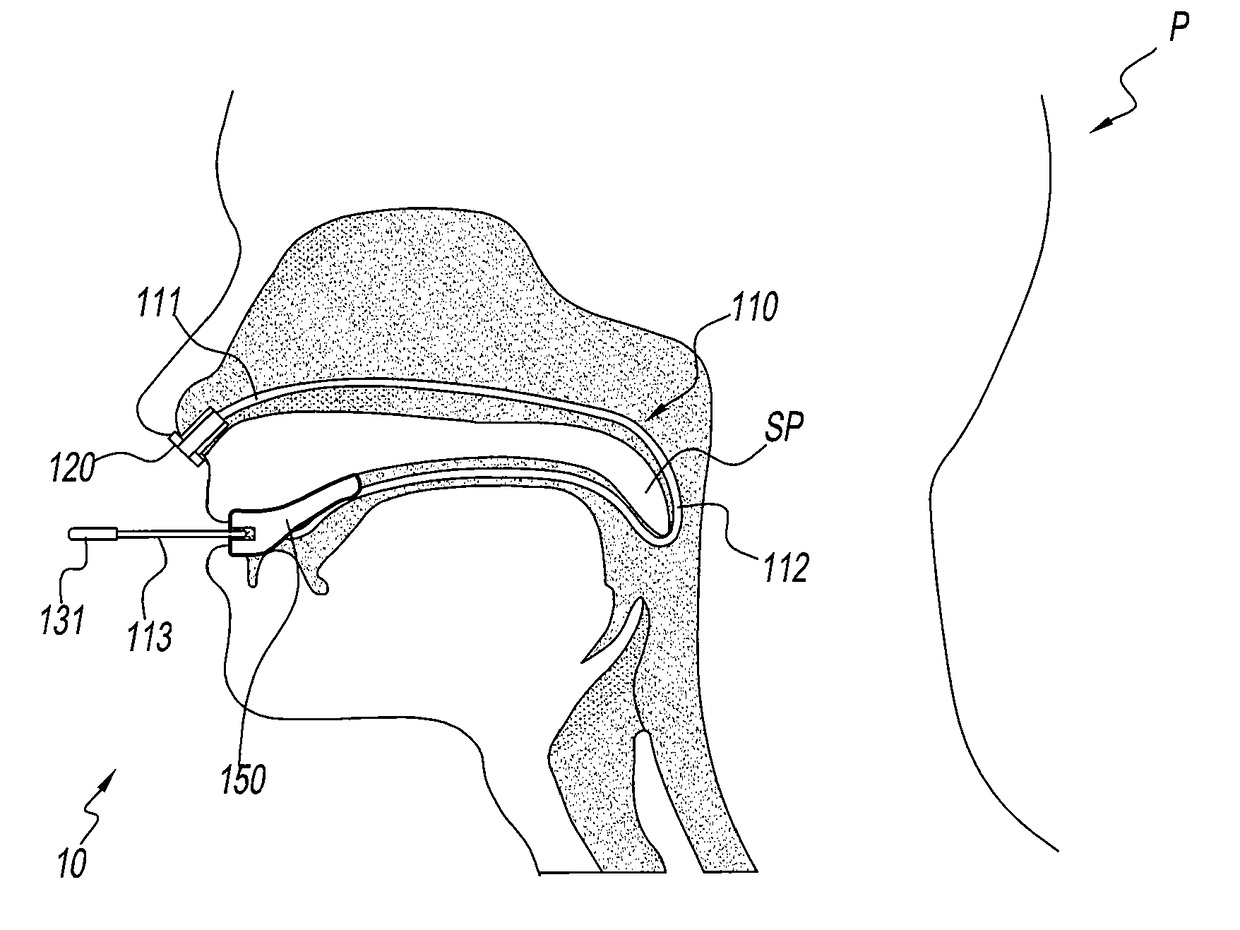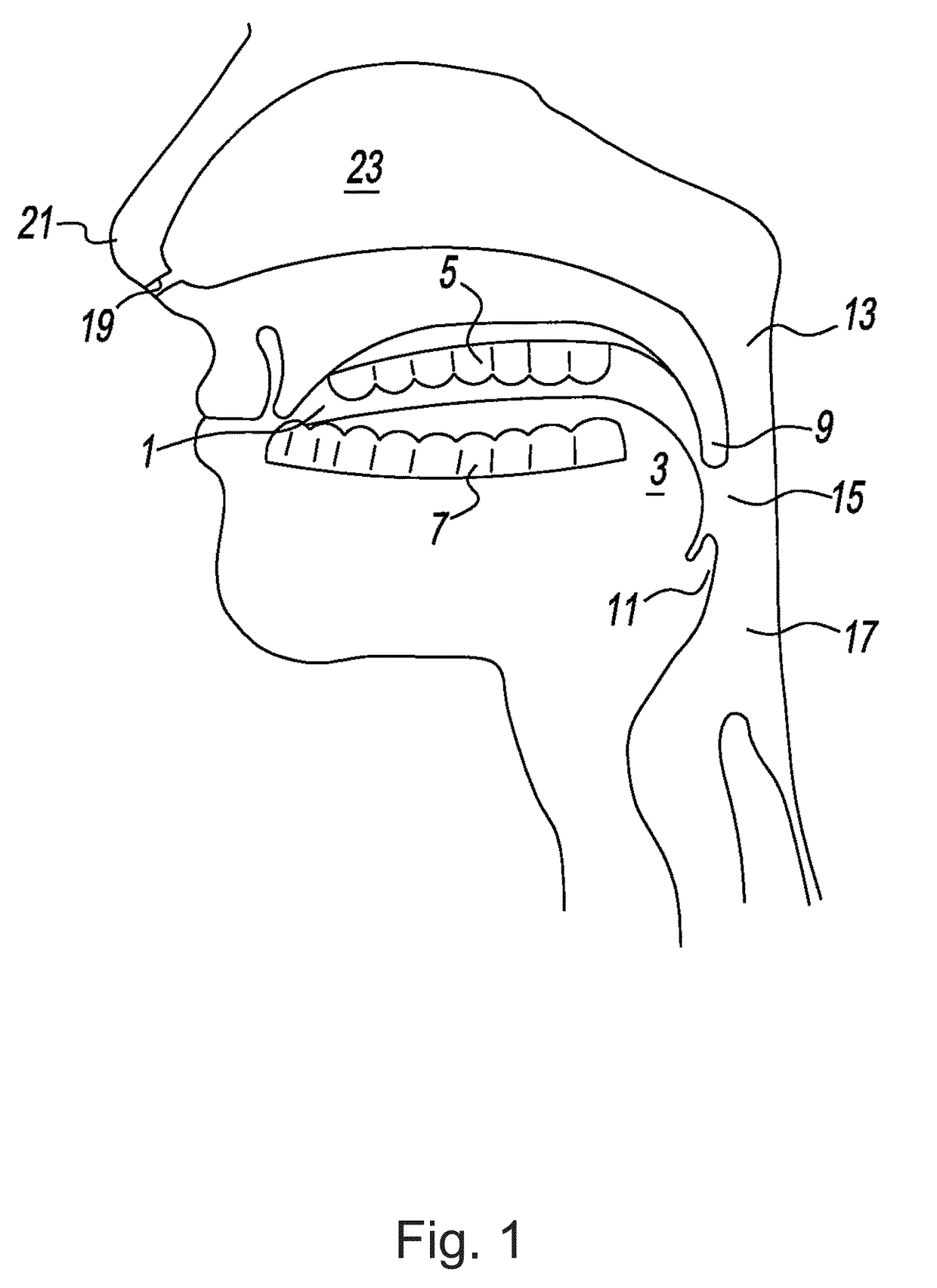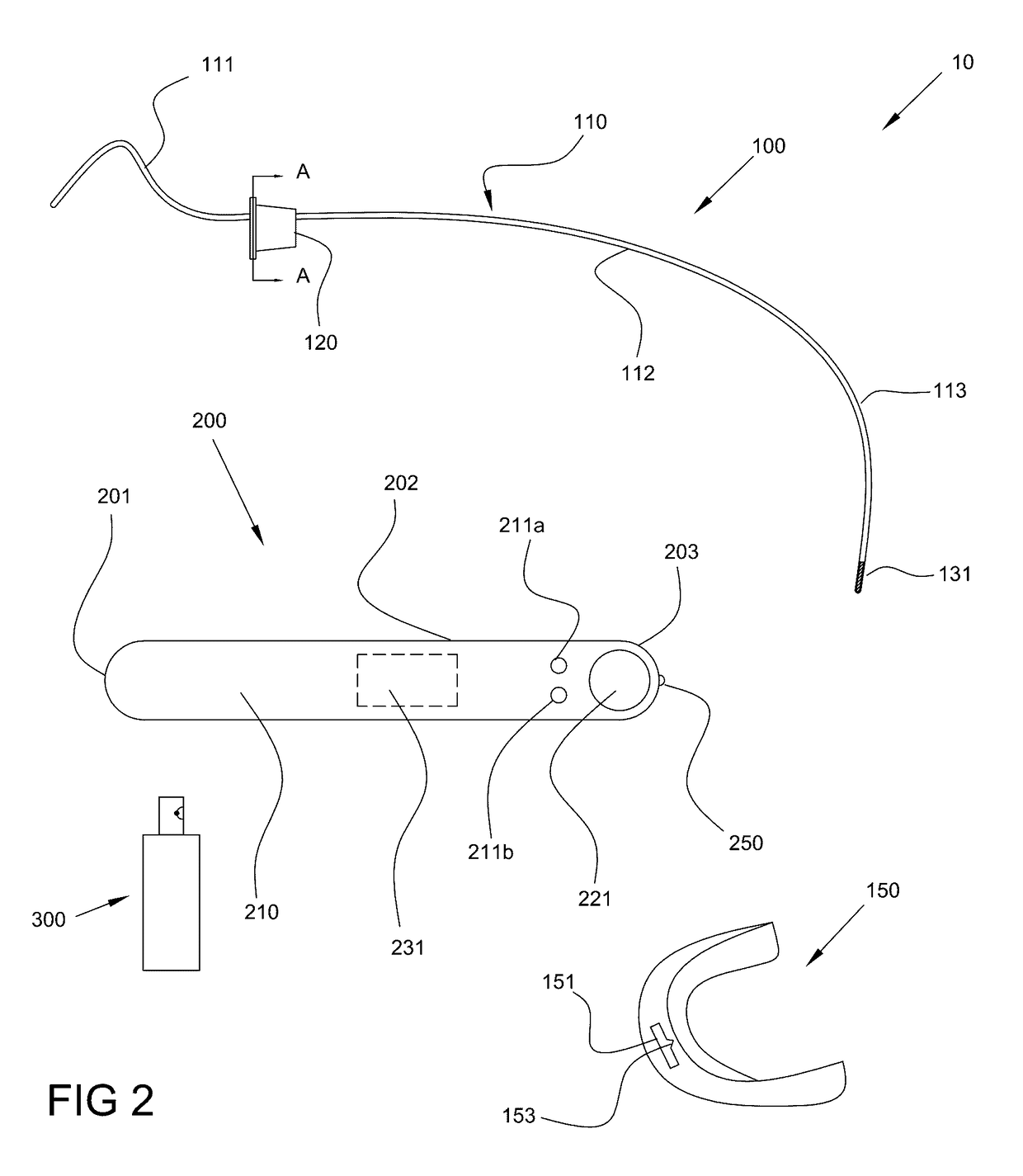Apparatus and methods for the treatment of sleep apnea
a technology for sleep apnea and apparatus, applied in the field of apparatus and methods for the treatment of sleep apnea, can solve the problems of hypersomnolent sleep apnea patients at risk of excessive mortality, potentially severe degrees of oxyhemoglobin unsaturation, and reduce arterial oxygen tension, so as to improve patient comfor
- Summary
- Abstract
- Description
- Claims
- Application Information
AI Technical Summary
Benefits of technology
Problems solved by technology
Method used
Image
Examples
Embodiment Construction
[0071]Reference will now be made in detail to the present embodiments of the disclosure, examples of which are illustrated in the accompanying drawings. Wherever possible, the same reference numbers will be used throughout the drawings to refer to the same or like parts.
[0072]Referring now to FIG. 1, a cross-section of a patient's oral cavity is illustrated. Oral cavity 1 includes a tongue 3, upper jaw 5, lower jaw 7, soft palate 9, and epiglottis 11, as well as the nasopharynx region 13, oropharynx region 15 and laryngopharynx region 17. In addition, nasal valve 19 and nose 21 having a nasal passageway 23 to connect nasal valve 19 with nasopharynx region 13.
[0073]Referring now to FIG. 2, an airway scaffolding apparatus including a scaffolding assembly, a capture probe and a jaw attachment assembly is illustrated. Airway scaffolding apparatus 10 is typically a nightly use device for a patient suffering from sleep apnea or other airway occlusive disorder. In one embodiment, airway sc...
PUM
 Login to View More
Login to View More Abstract
Description
Claims
Application Information
 Login to View More
Login to View More - R&D
- Intellectual Property
- Life Sciences
- Materials
- Tech Scout
- Unparalleled Data Quality
- Higher Quality Content
- 60% Fewer Hallucinations
Browse by: Latest US Patents, China's latest patents, Technical Efficacy Thesaurus, Application Domain, Technology Topic, Popular Technical Reports.
© 2025 PatSnap. All rights reserved.Legal|Privacy policy|Modern Slavery Act Transparency Statement|Sitemap|About US| Contact US: help@patsnap.com



